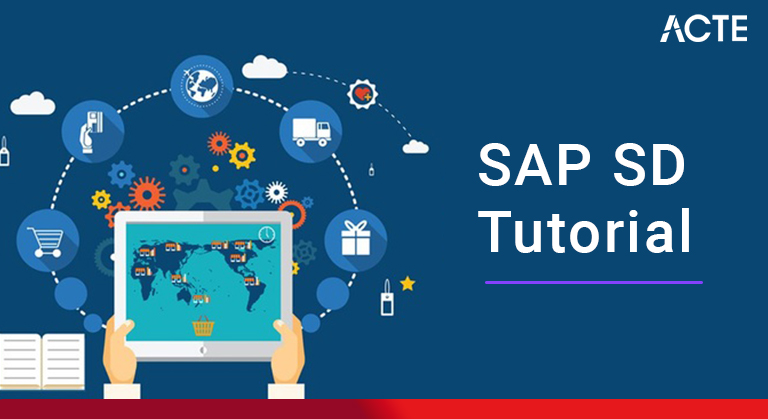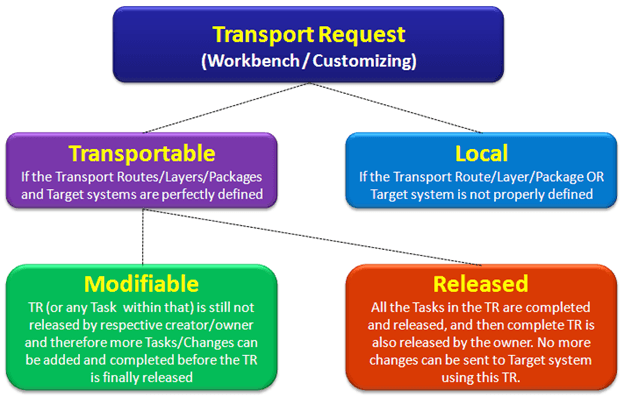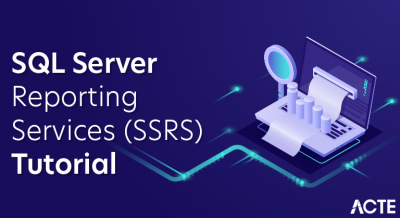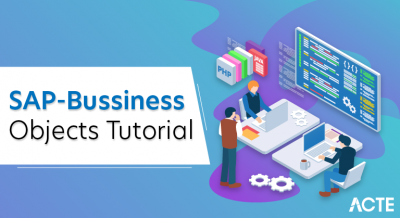
- SAP SD (Sales and Distribution)
- What is Variant Configuration? What are the kind of inquiries we can expect in that?
- SAP SD Customer Groups Sales Distribution Module OVS9?
- For what reason to Search for an exchange code?
- How to characterize Chart of Accounts in SAP?
- To characterize Chart of Accounts in SAP
- Quickly Methodology Implementation Steps
- How is a Transfer Orders Created?
- How Information Treats Transfer Orders Contain?
- How is a Transfer Order Structured?
- Sorts of Master information in SAP MM
- Accessibility Check in SAP SD
- Raincheck Processing
- Transport Request in SAP – Different Types
- What is Structure of SAP SD?
- Conclusion
SAP SD (Sales and Distribution)
This Online Tutorial gives brief comprehension of SAP Sales and Distribution module ideas and with models, SAP SD (Sales and Distribution) is a module exceptionally coordinated with other SAP Modules as SAP FI, SAP CO, SAP MM, SAP PP and more. This can make SD an intricate module, so as a component of this Introduction we will likewise attempt to detail an ordinary deals cycle and how the exercises incorporate and are covered by this module.
SAP Sales and Distribution handles deals exercises and Distribution. The fundamental exercises are deals request taking care of and appropriation of Shipment to the Customers. Likewise the charging system, client receipt, conveyance and hazard the board s dealt with from SAP Sales and Distribution module.

SAP Sales and Distribution (SD) is a significant module of SAP ERP comprising of business processes needed in selling, delivering, charging of an item. The module is firmly coordinated with SAP MM and SAP PP. Key sub-modules of SAP SD are Customer and Vendor Master Data, Sales, Delivery, Billing, Pricing, and Credit Management.
What is Variant Configuration? What are the kind of inquiries we can expect in that?
Variation setup is utilized where you have a configurable material like PC (comprised of parts like processor, screen, console, mouse and so forth) These parts are called as qualities in variation config. Again this will have values like processor can be either P4 or P3, screen can be 15″ or 17″ and so forth In light of the qualities chose the variation estimating will happen utilizing the condition type VA00.
- SAP’s Sales and Distribution module is very far reaching and contains different highlights for examination. One such element inside SAP SD is the production of Customer Groups. Just talking, client bunches are important for the client ace information in SAP IMG.
- Clients are alloted to a specific client bunch by appointing a two-digit alphanumeric key. Such client bunch key should be appointed to every single client ace records.
- The principle advantage of client bunches is that it very well may be utilized in producing insights and making condition records like records for valuing.
SAP SD Customer Groups Sales Distribution Module OVS9?
For what reason to Search for an exchange code?
In the event that you don’t know what an exchange code is, or you realize the exchange code yet can’t think that it is in the menu, utilize this exchange: Type in the exchange code, or part of the name for example deals request. Any exchange name with that text in it will be shown, alongside the menu way
How to characterize Chart of Accounts in SAP?
To Define Chart of Accounts : The outline of records in SAP (COA) is only rundown of GL accounts utilized by the organization. There are three sorts of graph of accounts.
1) Operative outline of records
2) Country explicit diagram of records
3) bunch diagram of records.
For the most part we utilize the graph of records to handle the standard deals is the Operative outline of records. We can post in this graph of record as it were. The leftover graph of records is utilized for various business situation.
According to the solicitation of the customer we can characterize other graph of record. The customization way according to underneath,

To characterize Chart of Accounts in SAP :-
SPRO>IMG>financial accounting>general record accounting>GL accounts>>master records> preparations>edit outline of record list:
Stage 1: Select new sections button to make new diagram of record.
Stage 2: By default the combination with controlling: physically just and save the information
Stage 3: The presence of the screen subsequent to giving the subtleties will be as under.
Stage 4: if there should arise an occurrence of gathering organization idea characterize one graph of record as gathering outline of records and give the gathering diagram of record name while characterizing the usable diagram of record.
Stage 5: After meaning of the diagram of record we need to appoint this outline of records to our organization code.
Stage 6: Menu Path as same above:
Stage 7: Click on position button.
Stage 8: Give organization code
Stage 9: Give graph of records and save the information
- The SAP ASAP Methodology (Accelerated SAP) gives the guide to enhancing and constant execution of SAP frameworks in the continuous business processes.
- The ASAP guide acquires to numerous number of devices, data and gas pedals to help colleagues with the execution of SAP R/3. The different periods of ASAP Methodology which comprise beneath
- The planning done on the way in which the framework ought to get designed and tried.
- Last Preparation Phase
- Fundamental design is to finished testing, end client preparing, framework the executives and cut over exercises.
- Basic open issues ought to be settled here.
- Upon effective fulfillment of this stage the deals are prepared to run in the SAP framework.
- Go live and Support Phase
- Progress from a task arranged, pre- useful climate to a fruitful and live useful activity.
Quickly Methodology Implementation Steps :-
How is a Transfer Orders Created?
You can make move orders by alluding to another record, for example, an exchange prerequisite, a conveyance archive, or a material report. You can likewise make an exchange request without alluding to some other report.
How Information Treats Transfer Orders Contain?
To complete its capacity, an exchange request should contain a material number, the amount to be moved, where the material is found, and where the material is to be conveyed. The data that the exchange request needs comes from a few sources:
How is a Transfer Order Structured?
The exchange request comprises of an exchange request header, which contains general data about the whole request, and at least one things. Move Order Header. The exchange orders header distinguishes the exchange request number and the date that it was made and affirmed. It additionally distinguishes the exchange necessity on which it is based and the development type. Assuming that the exchange request has been printed, the Transfer request printed check box is stamped.
- Material expert information, The essential subtleties on materials an undertaking secures remotely or produces in-house. The unit of measure and the portrayal of a material are instances of the information put away in a material expert record. Other SAP Logistics parts likewise access the material information.
- The material expert data set (regularly alluded to just as the “material expert”, and involving all the singular material expert records put away in the framework) contains depictions of all materials that an undertaking obtains, delivers, and keeps in stock.
- It is the focal vault of data on materials, (for example, stock levels) for the undertaking.
- The mix of all material information in a solitary materials data set kills the issue of information overt repetitiveness and licenses the information to be utilized by Purchasing, however by different applications (like Inventory Management, Materials Planning and Control, Invoice Verification, etc).
- Merchant ace information called as Information about outside providers. The merchant’s name and, the cash the seller utilizes, and the merchant number (put away in the SAP framework as a record number) are ordinary merchant information.
- The merchant ace data set contains data about the sellers that supply an endeavor. It comprises of an enormous number of individual seller ace records, each containing the applicable merchant’s name and address just as information, for example,
- The money utilized for requesting from the seller
Sorts of Master information in SAP MM :-

Accessibility Check in SAP SD :-
Accessibility Check in SAP SD: MD04 – Takes us to the Stock Requirement list – [Updation in the stock prerequisite rundown is the for the most part relies on checking gathering of MRP3 screen]
At the point when every one of the guaranteed orders have had the products saved, and all the approaching renewal have been dumped. What you have left in your stockroom is ATP (Available To Promise)
ATP is the most common way of really taking a look at the accessible amounts of material. The ATP amount is equivalent to product house stock in addition to arranged receipts (approaching stock) short the arranged issues (active stock)
ATP = Ware Hose Stock + Incoming Stock – Outgoing Stock
- It is simply the handling of a stock request, which itself is a business request that has not been affirmed in full or not affirmed at a specific conveyance date.
- Rescheduling is a proposition of how affirmed amounts previously allocated to deals requests can be reassigned to different orders that have a higher need, for example, a prior conveyance date.
- The transportation Notification is a record connected to buy request, it should be made when the merchandise are delivered from the seller and the date slips.
Raincheck Processing :-
Renewal Load Date (RLT) :-
It is the time expected to create the mentioned stock. RLT is just utilized on the material expert record. It very well still up in the air in two ways.
1). The RLT for a remotely delivered material. These settings can be made on the Purchasing and MRP 2 Views of the material expert.
2). The RLT for an inside delivered material. This depends on the in-house creation time, found in MRP 2 view, and the products receipt handling time or then again on the all out renewal lead time, which is found in the material expert record on the MRP 3 View.
Accessibility Check :-
Really taking a look at the supply of each thing after each great development, in order to introduce the Stock coming to ZERO. These are three sorts of Availability Check.
1). The Availability keep an eye based on the ATP amounts.
2). The Availability Check against item portion
3). The Availability Check against Planning
Transport Request in SAP – Different Types :-
Transport demand is utilized in SAP to move customization. The primary motivation behind Transport Request isn’t to roll out any improvements straightforwardly in Quality/Production server.
At the point when u does some design framework will request a solicitation. To make another Transport Request click on make and give the portrayal, then, at that point, framework will naturally produce a solicitation. to save it in the solicitation previously made go to claim solicitation and double tap on the solicitation name u need to save.

Making another solicitation and saving it in a similar solicitation relies upon how u needs the setup to be moved to Production/Quality.
There are 3 Types of Transport Request
“K” Type : The vehicle K sort carries out Transport Request of DE items from the reconciliation framework into the union framework. At the point when you make a vehicle demand utilizing the workbench coordinator, it generally utilizes this transport type naturally implying that all the movable change demands put away in the workbench coordinator are apportioned this transport type. For this transport type, the articles are moved to the combined frameworks without changing the item’s framework proprietor which implies that the moved articles in the solidified framework become fix objects and no redresses are took into consideration the imported items.
“C” Type : With this transport type the items change the framework proprietor after they are shipped which implies that the source arrangement of the article loses its possession after the article is moved. So the objective framework where the items are shipped turns into the first framework. At the end of the day objects are shipped as unique articles. So they can be adjusted or altered in the objective framework as well. That implies that change approval is additionally moved. In SAP terms, protests that are moved with C kinds are left a framework and looked into another framework.
“T” Type : Transport Request – This Transport type is helpful when you need to duplicate item between two frameworks in a gathering ie when a system(other than union framework) gets a duplicate of articles, the relating transport happens with transport type T.
- The all practically every firm Sales is organized in such manner.
- This design should be addressed in SAP SD in light of pre-characterized hierarchical components and consolidate them in a pre-characterized method of components, The Master Data frames the fundamental premise of SAP SD (Sales and dispersion) process, The expert information is the obligation of all the SAP R/3 modules, ass the every module has a component of it.
- SAP SD ace information will be surveyed by the numerous different modules other than deals SD, like FI, PP and CO. The principle construction of the expert information fundamental and addresses how the SAP framework is to act later on.
- It is most significant level of information and in this way is has the biggest impact on the standard business process. Ace information in SAP SD separated into three fundamental center regions.
What is Structure of SAP SD?
SAP SD (Sales and dispersion) :-
Hierarchical Data :
This is the fundamental construction of the each organization, by which every region of the business is addressed by a various leveled component. For instance a business region is built of a business association, a circulation channel, and a division. The money module utilizes the most elevated type of expert information, which is the ‘organization code” The SAP SD module coordinates with this organization code by means of the business association.
Report Master Data :
The ll the deal are put away as reports. These SAP SD archives are organized in such manner that all the important data is put away in extremely efficient manner.
Material Master Data :
The products and the administrations are sold by the organization, for that which the hierarchical information has been kept up with. we really want to address this material and administrations information in the framework just as keep up with and address all our different offered to equalities and accomplices.
Highlights of SAP SD module :-
Here are a few significant highlights of the SAP SD module:
Cost and Taxation: – It assists you with assessing the cost of labor and products under different conditions like refund or rebate, which is conceded to a client.
Accessibility Check: Check the accessibility of an item in the distribution center of an association.
Charging and Invoice: Helps you to produce bills or solicitations.
Material Determination: Helps you to decide the subtleties of materials based on a specific condition.
Credit Management: It is a technique for dealing with the credit furthest reaches of the clients. It very well may be figured in two unique ways straightforward credit check and programmed credit check.
Account Determination: Helps you to decide the subtleties of clients based on a given condition type.
- Ace Data
- Deals
- Transportation of Material
- Charging Related
- Deals support
- Transportation of items
- Unfamiliar Trade
Key Components of SAP SD :-
The SAP SD module is the most essential ERP module created by SAP. It helps in better administration of deals and client conveyance information and cycles in associations. The significant parts in SAP Sales and Distribution module are:

- Ace information is the main element in the Sales and Distribution module.
- There are two degrees of bosses in SD.
- Client Master
- Material Master
- Valuing Conditions
- While the subsequent level expert store subtleties like:
- Yield condition
- Definite data about clients, materials and colleagues
- Adaptable information structures support the business climate.
SAP-SD-MD (Master Data) :
SAP SD has ace information, which assists you with following every single exchange inside the information. The SD ace information contains both client and material information, and credit the board. This module incorporates cycles of request and money.
Elements of Mater Data :-
- Requests and Quotes
- Deals Orders
- Transfer
- Planning Agreements
- Rush Orders and Back Orders
- Credit and Debit Memo Requests
SAP-SD-SLS (Sales) :
SAP SD deals assist you with taking care of the moment subtleties of each deal that is occurring. Beginning from recording the item to client subtleties, evaluating, input, everything is followed utilizing this module.
Elements of Sales Module
- Programmed or manual Invoice Creation
- The thorough arrangement of charging capacities
- Ongoing reconciliation with finance
- Completely coordinated and thorough evaluating
SAP-SD-BIL (Billing Module):
Charging is the most significant piece of deals and circulation process. Purchasers are given a decision of paying by means of online media or money down. This particular module ought to monitor all the charging information in a legitimate manner.
Elements of Billing Module
- Produce Shipping Documents
- Picking, Packing and Inventory the executives
- Transportation Management and Scheduling
- Conveyance Scheduling, Returns Deliveries
- Stock Transfer
SAP-SD-SHP (Shipping):
Deals are connected all the time with transportation and conveyance. An item should be transported accurately and conveyed to the client. There are various strategies for transportation, and this module tracks every conveyance for every item. This whole cycle from being sent to conveyed or return back is recorded utilizing this module.
Functions of SAP-SD-SHP
- It is an adaptable and simple to utilize part which empowers you to gather, unite, and use information from deals and conveyance handling.
- It is generally utilized for (LIS) Logistic Information System.
SAP-SD-TBA (Transportation):
This part works alongside the delivery module. As the method of transportation for every item contrasts, and this module assists you with following all the transportation-related information.
SAP-SD-TBA Features :
- Deals Prospects
- Contact Persons
- Contenders and Competitive Products
- Deals Activities
- Direct Marketing
SAP-SD-CAS (Sales Support):
From offering an item to keeping up with it for a cycle, clients continually communicate with the outreach group. The information traded between the outreach group and clients while conveying support for an item is recorded and detailed through this module.
Elements of Sales support:
- Track deals exchanges
- Tracks deals information alongside group execution
- Record pre-deal and post-deal process
- Characterized process for deals and appropriation
- Assists you with sorting assorted deals and interaction
- Compelling administration of deals reports in a particular framework
SAP-SD-FTT (Foreign Trade):
It assists you with overseeing information, which is connected with unfamiliar exchange, which incorporates both imported and sent out items. This module is great for endeavors that exchange across various landmasses.
Benefits of SAP SD Software
- Ace information, assists you with following every single exchange inside the information
- SAP SD deals assist you with taking care of the moment subtleties of each deal that is occurring
- SAP Billing module monitors all the charging information in an appropriate manner
- SAP SD transporting module assists you with recording whole cycle from being sent to conveyed or return back.
- SAP SD transportation module assists you with following all the transportation-related information
- SAP SD deals support module record and report information between the outreach group and clients
- SAP SD unfamiliar exchange assists you with overseeing information, which is connected with unfamiliar exchange
- SAP SD assists you with following deals exchanges alongside group execution






